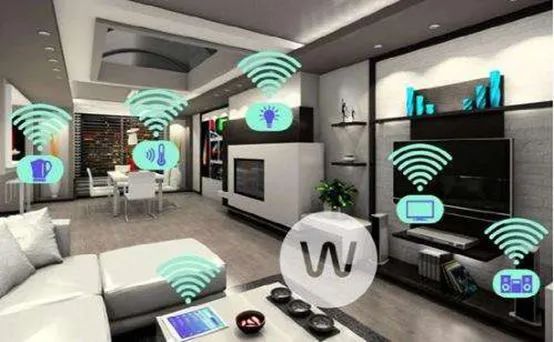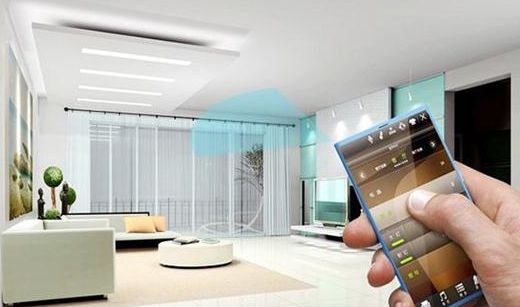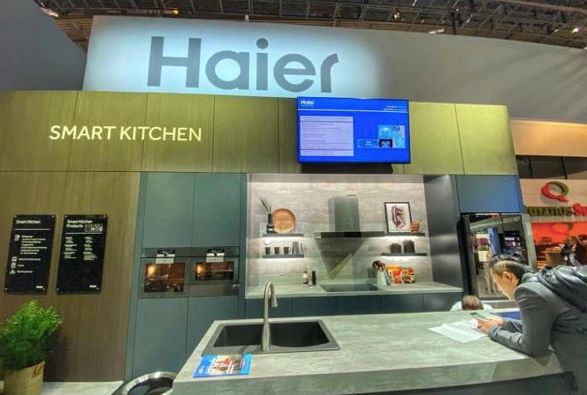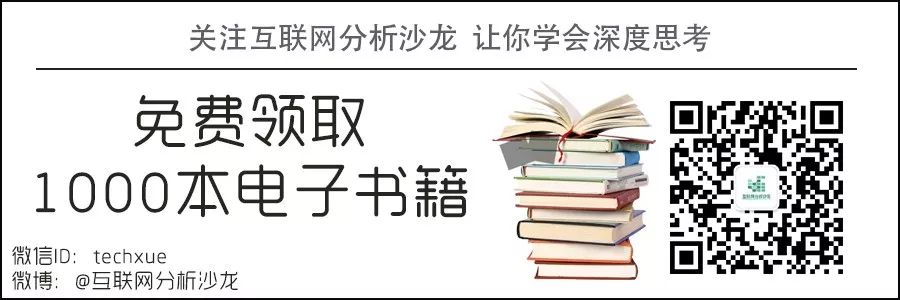
By/Salon Team Edited by/Dai Xihai, Salon Jun
27 years ago, the United States launched a cross-century project plan called the “National Information Infrastructure”. It is also known by the familiar name – the Information Superhighway.
The deep-seated reason for the launch of the Information Superhighway was that the traditional telephone business in the U.S. had become increasingly saturated. Meanwhile, the accelerated popularization of computer networks, data storage, cable television, and multimedia technology made the development of the “Information Superhighway” increasingly urgent due to this structural change in the industry.
The implementation of this plan not only gave rise to a number of internet giants but also contributed to the future brilliance of the U.S. information economy.
27 years later, traditional network infrastructure can no longer make the Information Superhighway faster. With the accelerated application of new technologies such as 5G networks, artificial intelligence, industrial internet, and cloud computing big data centers, the reconstruction and rapid development of the Information Superhighway have become imminent.
China, known as the “infrastructure madman”, continues to sprint on “old infrastructure” while mobilizing the entire nation to usher in the era of new infrastructure, heralding a far-reaching industrial transformation.
It is foreseeable that industries closely related to new infrastructure, such as finance, education, retail, industry, and smart homes, will also reach new heights. Among them, the most closely related to our lives is smart homes. Various companies are actively building smart home ecosystems: The “Huawei system” provides a smooth experience for interconnecting household items, the “Xiaomi chain” offers smart solutions for household entertainment needs, and the “Haier circle” provides comprehensive solutions rooted in smart health living.
These three companies, representing three different models, essentially illustrate three future directions for smart homes in China today, allowing us to envision the “future home” – with more possibilities for intelligence, convenience, health, and entertainment.

01
“Huawei System”: Utilizing Communication Advantages for Smoother Connection Services
By focusing on 5G, Huawei has leaped forward.
Focusing on the development of smart homes, Huawei has launched the Hi-link smart home ecosystem strategy, using AI speakers, smart screens, routers, and smartphones as entry points, with the HiLink platform at its core to build an ecosystem.
Today, companies from various fields such as home appliances, home decoration, and the internet are all aiming for the broader arena of smart homes. In contrast, communication companies have a first-mover advantage at the underlying connection level. Among their “entry” products, not only do smartphones have fast communication capabilities, but also routers, optical network terminals, and other products fully embody this gene.
For example, Huawei launched the world’s first integrated AI function (eAI) ONT (Optical Network Terminal) series products, OptiXstar V864 / K654. These products support GPON / XGS PON gigabit access, intelligent service type identification, Wi-Fi 6 acceleration, and mesh home Wi-Fi coverage, providing smart home users with a brand new ultra-fast experience. For family life, Huawei ensures the stability and smoothness of smart homes, greatly enhancing user experience.
While “building roads and bridges” in network construction, the “Huawei system” is also continuously expanding.
According to data released by Huawei in mid-2019, its ecosystem platform has gathered 600 partners, covering over 100 categories of daily life products. By collaborating with A.O. Smith, Opple Lighting, Siemens, Aux, and Panasonic, Huawei has also compensated for hardware deficiencies to some extent.
However, although Huawei is “making friends”, the relationship between “friends” is not very close. Experts point out that while related brand products can connect smoothly with Huawei, if it is merely a connection between products rather than a fusion of functions, it can only be called “connected home” but not “smart home”.
In the future, how to integrate the products of resource parties within the platform to form a complete solution is something Huawei still needs to work on. Of course, for anyone, truly achieving cross-border integration is not something that can be solved overnight.
02
“Haier Circle”: The Ecosystem Plays a Role, Continuously Iterating Smart Living Experiences
Rooted in user households, this unique advantage is the fundamental reason why home appliance companies stand out among numerous “contenders”.
After all, when it comes to life, household users cannot do without eating, drinking, playing, and wearing. And these are all “controlled” by large appliances such as refrigerators, washing machines, and air conditioners. According to data from the Forward Industry Research Institute, the market share of smart air conditioners, smart refrigerators, and smart washing machines combined exceeds 70%, with the highest penetration rate.
Among them, Haier Smart Home has secured a relatively stable voice.
In fact, it is already outdated to label Haier as a home appliance company. More than a decade before it was renamed “Haier Smart Home” last year, Haier had already laid out multiple steps from digital products, digital platforms to digital organizational ecosystems.
Today, the positive effects of these “forward-looking layouts” are gradually becoming apparent.

First, regarding digital products, Haier Smart Home refers to them more as “network devices”. From smart refrigerators that ensure healthy eating, smart washing machines that provide comfortable clothing, to smart air conditioners that ensure healthy breathing, Haier’s layout in the smart home field is more “down-to-earth” for users.
For example, during the pandemic, Haier gradually developed health air scenarios such as air conditioning sterilization, air disinfection, and antibacterial fresh air, and initiated a new wave of health revolution in the industry through the “56 degrees Celsius” healthy breathing campaign.
Next is the digital platform, which is also a secret weapon for Haier Smart Home’s low-key layout. The smart living cloud platform U+, and the industrial internet platform COSMOPlat, from front-end interaction, smart interconnection, to large-scale customization, ensure that users’ living needs are connected and realized.
Finally, there is the digital organizational ecosystem. Although there have been misunderstandings in previous years, with recognition from international authoritative institutions and experts over the past two years, Haier’s model of “one person, one unit” and small micro-organizations have gradually gained recognition. The “co-creation” from within – that is, the ecosystem that creates value together – has also accumulated more and more innovative resources. In the “5+7+N” full-scene smart home solution, Haier has built seven ecosystems such as clothing internet, food internet, and air ecology, innovating healthy living with many ecological partners.
From designing a home, building a home, to serving a home, Haier Smart Home has put in considerable effort, with “full” being a major feature: full scene, full process, full ecosystem, etc., and it is expected that more surprises will gradually emerge.
However, for Haier, which is not good at “marketing”, the “soft battles” beyond the hard battles cannot be underestimated.
03
“Xiaomi Chain”: The Ecological Chain Highlights Value, Making Products More Cost-Effective
Although also entering the market as a smartphone manufacturer, Xiaomi, as the youngest company among them, possesses youthful innovation power, which has garnered a loyal following of “Mi Fans” – characterized by their “pursuit of entertainment” and “pursuit of cost-effectiveness”.
First, it is the life entertainment that excites “Mi Fans”.
Xiaomi has built a sizable IoT platform through its ecological chain enterprises, implanting AI assistant Xiao Ai, making Xiaomi smart speakers a “star product”.
The Xiao Ai speaker not only comes with a wealth of resources, providing users with music, novels, stories, and other services, but also offers daily information broadcasts, including weather and news. During the pandemic, Xiao Ai launched a pandemic reporting function to provide users with timely information. Additionally, the Xiao Ai speaker serves as the hub of Xiaomi’s smart home, controlling other smart home products.
Secondly, it is the high cost-effectiveness that keeps “Mi Fans” excited.
Not only smart products, but from a pen to a kettle to a rice cooker, Xiaomi’s product ecosystem covers a wide range and is known for its high cost-effectiveness, humorously referred to by fans as “Xiaomi’s general store”. Through investments, Xiaomi has gradually connected its ecological chain, creating a rich product matrix around user needs.
Since its inception, Xiaomi has targeted young users, focusing on high cost-effectiveness products. The emergence of Xiaomi power banks has disrupted the entire industry’s development, and there are many similar products.
Experts have also pointed out that this has made Xiaomi successful, but it has also hindered Xiaomi. It is understood that this is because its brand development route aimed at young people has hindered its hardware products from expanding into other user segments, especially its high-end path, which has been humorously referred to by netizens as “difficult to achieve”.
Now, Xiaomi is exploring the high-end market from overseas and the two directions of “5G+AIoT”, and whether it can reverse its brand image and user perception remains to be seen.

In Conclusion:
During the last round of smart hardware development, the smart home industry has always been in a lukewarm state. The pandemic has weakened connections between people but amplified non-contact connections between people and objects, and between objects. The vigorous promotion of new infrastructure will undoubtedly drive a substantial leap in the IoT industry. As one of the subfields of IoT, building core systems for indoor smart health solutions, smart homes may truly usher in a new round of explosion.
The current smart home industry has formed three forces represented by Huawei, Xiaomi, and Haier, or three ecosystems: Huawei “connects” everything, Xiaomi “entertains” life, and Haier Smart Home makes life healthier and smarter.In the upcoming era of new infrastructure, for smart home companies, who will represent the mainstream development direction of the future? Who will provide future family services that meet user needs? Whether it is the “Haier Circle”, “Huawei System”, or “Xiaomi Chain”, ultimately, while seizing the industrial dividends, truly serving users and providing the smart home products they need will ensure that smart homes are no longer a false proposition, thus achieving long-term development.
END


Account Introduction
Internet Analysis Salon: One of the earliest technology self-media in China, focusing on in-depth analysis of the industry and observing the latest trends, with a total of 2 million followers on WeChat/Weibo.
Dai Xihai: Co-founder of Internet Analysis Salon, senior public relations expert, previously worked for well-known internet companies such as 360 and Gome E-commerce. Column articles are synchronized with over 20 media outlets including Toutiao, Sina, TMTPost, Jiemian, Xueqiu, and Sohu.
Welcome to communicate and cooperate, QQ number: 2741164797 WeChat ID: daixihai
Recommended Reading
Douyin, PUBG, Honor of Kings… How Your Self-Discipline Has Been Gradually Destroyed by Them?
